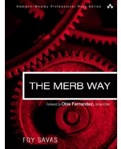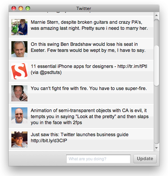 Have you ever yearned for something like Rails’s script/console or Merb’s merb -i in your other Rack based apps? If so, then Marcin Kulik‘s racksh, inspired by Heroku’s console, might be for you.
Have you ever yearned for something like Rails’s script/console or Merb’s merb -i in your other Rack based apps? If so, then Marcin Kulik‘s racksh, inspired by Heroku’s console, might be for you.
Racksh is a console for Rack based ruby web applications. It allows you run a console in the context of an application environment for Rails, Merb, Sinatra, Camping, Ramaze (or even your own framework) provided there is a rackup file in the root directory.
When you run the racksh command, it loads the whole application environment just like a Rack web server, but instead of running the app it starts an irb session where you can invoke commands. Read More






 I’ve been reading the
I’ve been reading the  I have been contemplating the use of document-stores in my Ruby apps for a few months (you might remember my
I have been contemplating the use of document-stores in my Ruby apps for a few months (you might remember my 
 I recently came across the interesting-looking
I recently came across the interesting-looking  Simone Carletti of Altura Labs recently announced on
Simone Carletti of Altura Labs recently announced on 

 I attended the
I attended the  In the keynote (
In the keynote ( Like
Like